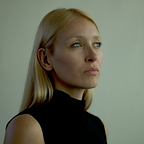‘Trash to Treasure’ by Fionn Dobbin, Age5
This is a summary of Fionn Dobbin’s speech at ‘Museums Facing Extinction’ Conference on November 16th 2020.
From trash to 1000 new ideas
Fionn Dobbin, founder and creative director of Age5 (Latvia) described a pop-up store implemented during a furniture fair in Milano. There created a “Trash Bar” in the space where the visitors could choose different types of trash and start imagining how to re-use it and ideat new solutions. In a very short time, within three days, over 3000 people visited the space and actively participated. Together with the visitors, they developed thousands of different ideas and built real prototypes.
What is most fascinating is the topic of taking a problem and bringing it to society. These problems are not tackled as though we are a team of experts, but we are ordinary members of the society attempting commonplace approaches. From students to kindergarteners, bus drivers, bakers, and teachers — everyone could join in, working on tackling the same problem.
Fionn gave another example. He explained that this lamp is made from upcycled, unused nail polish bottles. So, what the studio from Berlin “llot llov” did? They took this material, they grinded it down and then they developed this beautiful terrazzo out of it. They’re building beautiful furniture from unsold nail polish bottles.
Public participation
The most exciting thing for Fionn however, is how the public can be involved in the museum’s curatorial and design process. How can we source ideas from people who are out there? How can they gain access to these spaces, and how can these processes be democratized?
To push a project like this, according to Fionn Dobbin, one will need to begin by analyzing the “fields which need to be innovated regarding sustainability.” Although museums are not the biggest trash producers, they can become more sustainable, for instance, in packaging.
However, significant learning is how to bring in society and become the problem-solution workshops, the ideation process. This is very well suited to a museum, inviting people from different spheres of society and having them in the space as the designers and the experts. Often, we prioritize experts’ opinions in a particular field — as it should be, over actual people who can get in and offer more creativity than we imagine possible.
We should also be more open to finding real solutions instead of just falling back on hacks, such as upcycling. Undeniably, these hacks are required to make sure that the solutions provided make a difference; as Fionn Dobbin put it — “for the fast solutions to have the right impact, we need those fast hacks.” However, we should be wary of viewing them as the final solutions as it can be very easy to get carried away.
“For the fast solutions to have the right impact, we need those fast hacks.”
For us all, the most significant takeaway should be that museums could involve all kinds of people — designers, creatives, and so many others from different walks of life who are interested in working with their hands. These people can then come together and turn these leftovers into beautiful souvenirs.
This is very symbolic because not only do museum visitors get to take home the memories from the museum, you get a piece of art that was previously trash as a keepsake.
